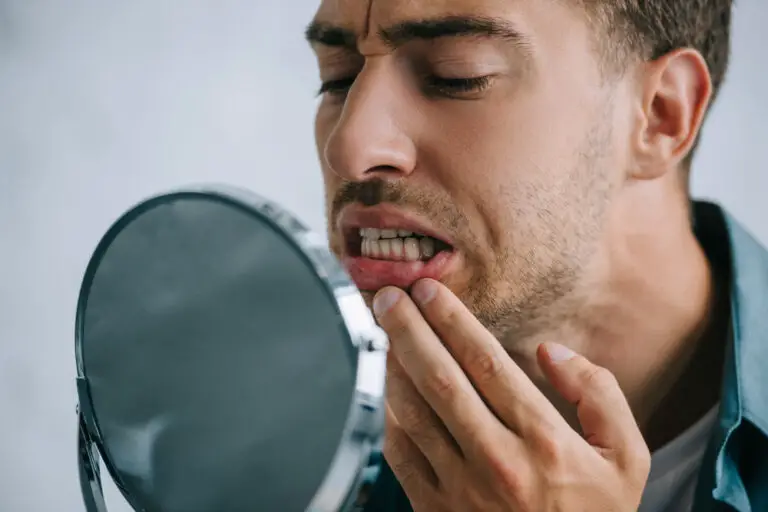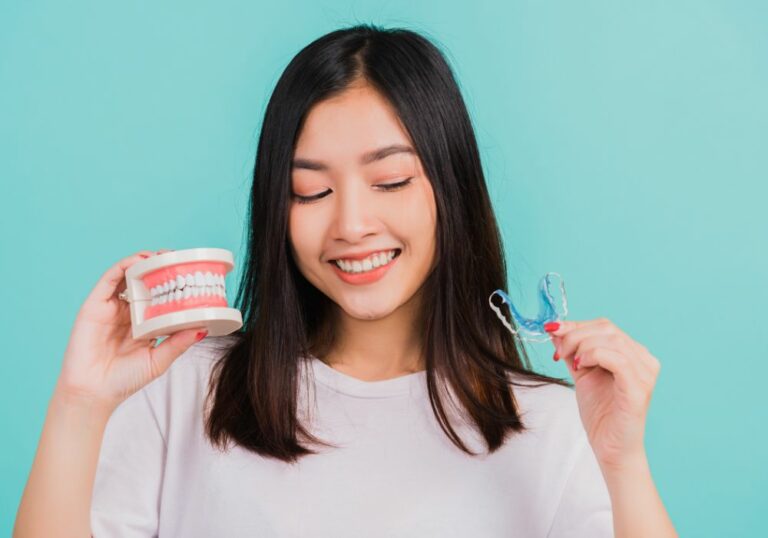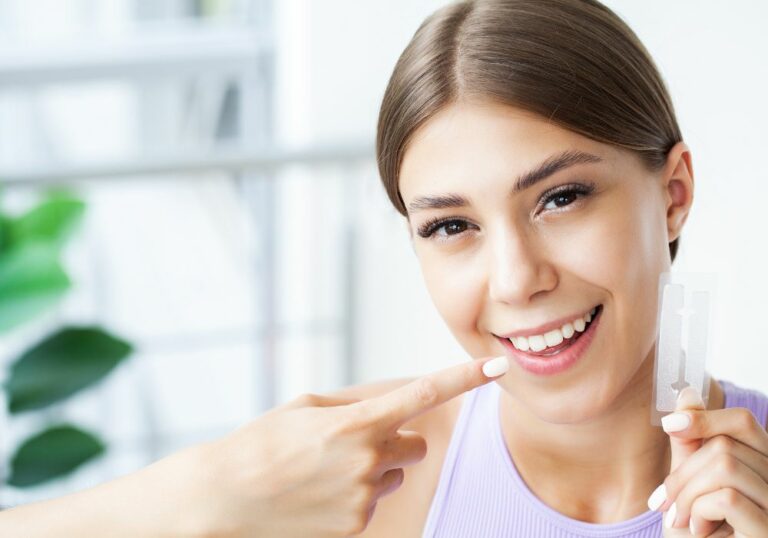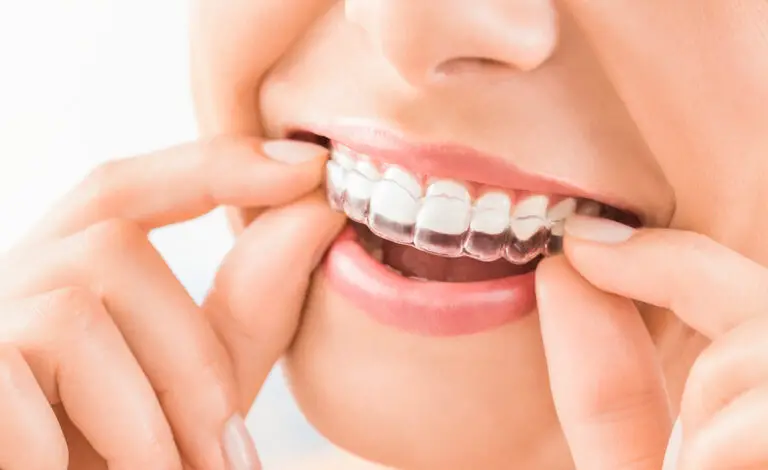Teeth whiteners are quite popular nowadays and for a lot of good reasons. While it’s technically a cosmetic procedure and doesn’t immediately treat any health issues in the teeth or gums, a good whitening treatment can deal with stains and discoloration on our teeth which can be detrimental to our work, lifestyle, and behavior.
Yet, are there risks and side effects related to at-office or at-home teeth whitening? Aren’t most whitening kits, trays, gels, strips, and every other whitening product peroxide-based, i.e. a bleaching agent? Does this mean that using tooth-whitening take-home kits can harm your tooth enamel? If so, how often should you whiten your teeth to get results without harming your teeth and what else can you do in the meantime?
How Often Should You Whiten Your Teeth?
It’s true that most over-the-counter products or professional whitening treatments include some amounts of hydrogen peroxide which is a bleaching agent. This doesn’t mean that they are immediately and categorically harmful, however.
A somewhat apt analogy would be hair-bleaching products – when used in moderation, those two can be harmless to your hair. However, if you overuse them or if you don’t apply them properly, they can be quite damaging to your hair’s health in the long run.
Something similar applies here – if you use teeth whitening products adequately, according to their instructions, and only as often as you are supposed to, everything should be fine. In fact, the comparison works even better for teeth whitening products because hair bleaching does affect the hair itself whereas both professional teeth whitening products and at-home kits are meant to only bleach out the stains and shades on your teeth, not the teeth themselves.
So, now that we know teeth whitening products aren’t inherently dangerous and problematic, how often should you whiten your teeth?
Unfortunately, there isn’t a singular answer here because every whitening kit and product is different as is every person. For some products and for people with strong and healthy teeth enamel, a second application can be done 3-4 months after the first one.
If we’re talking about a stronger product and not mere touch-ups, however, and/or if you have tooth sensitivity or other potential issues, your dentist may recommend that you space the treatments out to once a year.
In other words, even though many people hate to hear this – your safest bet is to consult with your dentist before you do anything. This doesn’t mean that you should necessarily use the dentist’s expensive in-office treatment, however – you can still get one of the more affordable at-home whitening kits if you want, it’s just smart to first consult with a professional about the overall health of your teeth.
Why Shouldn’t I Whiten My Teeth More Often?
Even the most basic whitening gel or whitening strip can cause irritation if it’s overused or if it isn’t applied properly. Furthermore, both at-home and in-office bleaching can eventually damage if it’s overdone which is why most dentists would advise against it even though it’s in their monetary benefit to offer their dental services as much as possible.
So, if you feel that you’re in need of more procedures, your dentist will likely recommend alternatives such as deep dental cleaning to remove plaque buildup or other maintenance tips and tricks which we’ll also list below.
Can you whiten your teeth too much?
This can seem like a silly question to some as most people never face that issue. Yet, “over whitening” can be a thing that happens. In fact, there is an entire condition called bleachorexia which is an addictive and compulsive behavior of constantly wanting to whiten your teeth.
When this is done to a harmful degree, you can indeed start to harm your teeth’s enamel. What’s more, over-whitening can also harm your gums, particularly the gum edges that are closest to the teeth. Such an irritation in the gums is the first red flag most people feel when they accidentally start going overboard with their quest for the ultimate shade of whiteness but “bleachorexics” tend to ignore that irritation and just keep going.
Needless to say, this is a bad idea and you should explore other alternatives for improving your smile in between whitening treatments. After all, a natural-looking smile isn’t one that features 100% marble-like white teeth. In fact, there’s nothing natural about it as our teeth aren’t meant to be perfectly white.
What if the wait is too long for the effect you want?
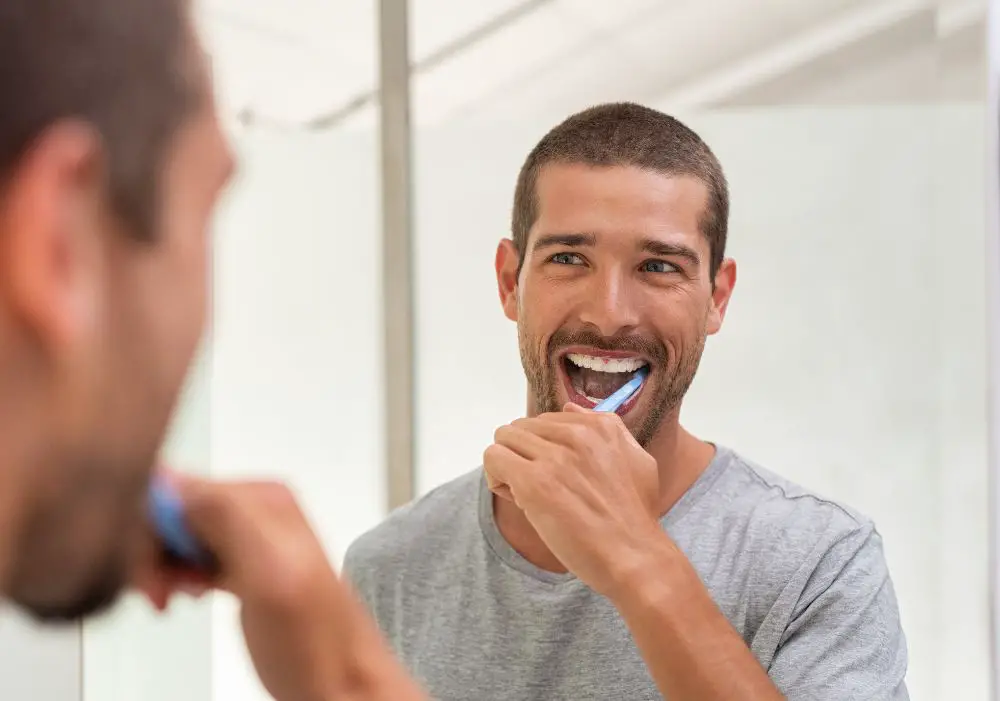
The good news is that there are lots of other things you can do to both improve the health of your teeth and get that white smile you want in-between whitening treatments. The process may feel slow and gradual for some folks, especially if there’s lots to do but it will be safe and effective if you do it right. Here are some tips and tricks to help you along the way:
- Use a good fluoride whitening toothpaste – unlike other whitening treatments, this type of toothpaste doesn’t actually have bleaching agents in it and isn’t actively whitening your enamel. Instead, it works by preventing further darkening of your teeth by dealing with stains of all sorts. Brushing with such a paste can still be irritating for people with sensitive gums, however.
- Regular flossing – It is also important both for your health and for how white your teeth look. A lot of the shades and stains that darken our smiles usually start from the hard-to-reach edges between our teeth. Those are spots brushing can’t help with on its own but flossing can help keep our teeth plaque-free and prevent any new stains from developing.
- Using a good mouthwash for rinses after brushing is also key – it removes any leftover bacteria, food particles, and excess coloring agents that can stain our teeth even after we’ve brushed and flossed. This is an especially good habit before you go to sleep at night as tooth stains develop especially easily overnight.
- Limit the main causes of tooth stains as much as possible – This includes smoking tobacco and drinking colored beverages such as coffee, tea, and red wine. Smokers are especially notorious for having problems with their teeth’s color as tobacco is a very strong coloring agent and smoking tends to affect the front teeth the most.
As far as drinking is concerned, some beverages can be drunk through a straw to avoid coloring your teeth but coffee and wine hardly feel good through a straw. - Maintain a good diet and exercise routine – This can be frustrating for some to hear but maintaining a good diet and exercise routine is great for your teeth’s health and color, especially in-between whitening procedures. There are many aspects to this – for starters, this ensures that teeth and gums are as healthy as possible and can take to the treatments well.
More than that, a healthy diet typically doesn’t include a lot of tooth-coloring foods and drinks that necessitate whitening treatments. Lastly, a good high-mineral and high-vitamin diet slows down the natural darkening of our teeth that comes with age.
What if the teeth whitening procedure isn’t working?
If you’re having issues that are too severe for even a great in-office whitening treatment to fix then you likely need something more than a cosmetic procedure. In those cases, it’s likely that you have an actual health issue, be it cavities, some mineral or vitamin deficiency, or actual tooth decay. In those cases, you’d need a much more serious treatment or potentially even tooth bridges or implants.
In Conclusion
Teeth whitening is a great and simple cosmetic procedure that can get rid of a lot of the teeth stains, shades, blemishes, and darkening that can come from smoking, eating, and drinking dark liquids as well as the gradual darkening of the teeth that comes with old age.
Of course, teeth whitening is in no way a replacement for good oral hygiene as it doesn’t improve your teeth’s health – it’s the teeth cleanings that are typically done before the whitening procedure that are actually important for your health.
Yet, a good teeth whitening routine can be beneficial for many other aspects of your life, including work, your social life, self-esteem, and more. That is, unless you start overdoing it and going into “bleachorexic” extremes that are outright harmful to your teeth and gums.
So, the way to go usually is to just go to a routine dentist checkup to make sure that your gums and enamel are in good health and consult with your dentist about the what’s the best and safest teeth whitening schedule for you.
The answers here can range anywhere between “once every 3-4 months” if you are considering only light treatments and touchups on healthy teeth to “once a year” if you want heavy-duty treatments and/or your teeth and gums aren’t in the best shape.


